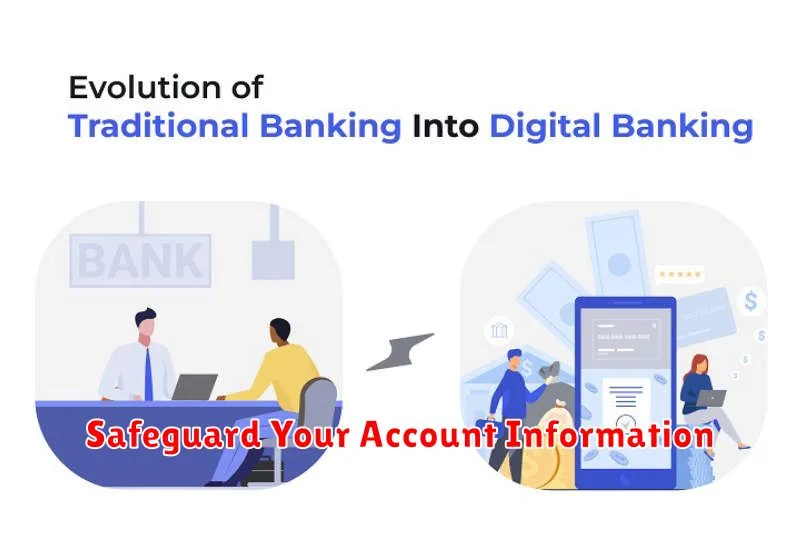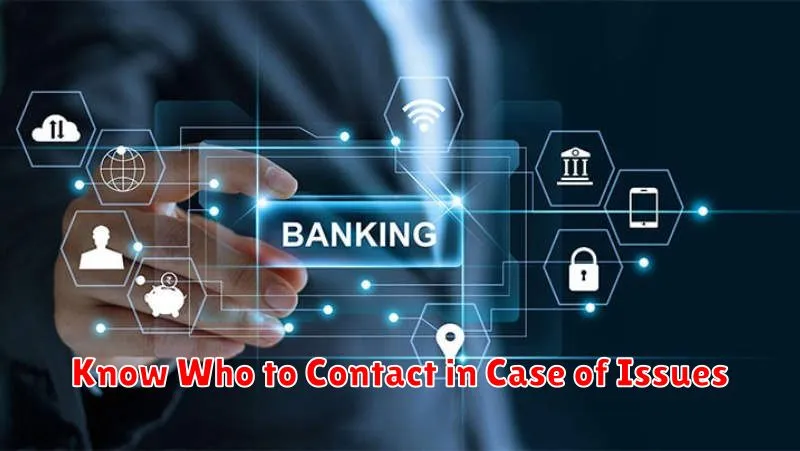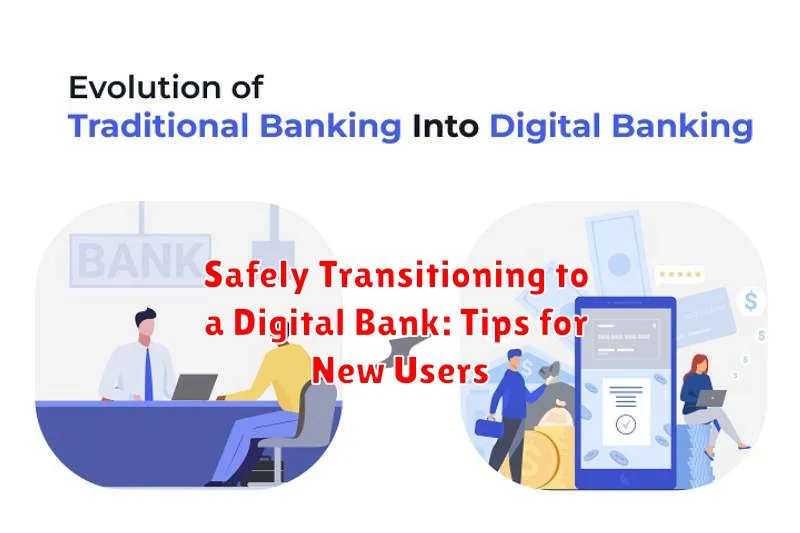In today’s rapidly evolving financial landscape, the shift towards digital banking is undeniable. For new users, transitioning to a fully online banking experience can feel daunting. This article addresses those concerns, offering practical tips and insights to ensure a safe and seamless transition to digital banking. Understanding the security measures, navigating the digital platforms, and recognizing the benefits are crucial for new users embracing this modern approach to financial management. We will explore key aspects of safe digital banking, empowering you to confidently manage your finances online.
From enhanced security features like multi-factor authentication to the convenience of 24/7 account access, digital banking presents numerous advantages. This guide will delve into the critical steps for securely setting up your digital account, protecting your sensitive information, and maximizing the potential of your new digital bank. Learn how to avoid common pitfalls, recognize phishing attempts, and confidently embrace the benefits of digital banking. This article aims to equip new users with the knowledge and resources to confidently navigate the world of safe digital banking.
Research Before Choosing a Bank
Transitioning to a digital bank requires careful consideration. Thorough research is paramount before committing to a specific institution. Begin by identifying your specific banking needs. Do you require frequent ATM access? Are international transactions a necessity? Understanding your requirements will help narrow your search.
Next, compare different digital banks. Examine their offered services, fees, and customer reviews. Look for FDIC insurance to ensure your deposits are protected. Pay close attention to the bank’s security measures, including two-factor authentication and fraud protection. Finally, consider the bank’s customer service accessibility and responsiveness.
Verify Bank Security Measures
Before committing to a digital bank, thoroughly investigate its security protocols. Multi-factor authentication (MFA) is crucial. Ensure the bank utilizes this security measure to add an extra layer of protection to your account.
Look for FDIC insurance. This protects your deposits up to $250,000 in case the bank fails. Confirm the digital bank’s FDIC status on the FDIC website. Additionally, investigate the bank’s fraud prevention policies. A strong security infrastructure should include measures like fraud monitoring and real-time alerts.
Research the bank’s security certifications and read their privacy policy to understand how your data is handled. These steps help ensure your funds and information are protected.
Set Up Strong Authentication
Multi-factor authentication (MFA) adds an extra layer of security to your digital banking experience. Enable MFA wherever possible. This typically involves receiving a one-time code via text message, email, or an authenticator app on your smartphone whenever you log in.
Choose a strong and unique password for your digital banking account. Avoid using easily guessable information like birthdays or pet names. Consider using a password manager to generate and securely store complex passwords.
Regularly review your security settings and update your recovery information, such as your phone number and email address. This ensures you can regain access if you ever lose your login credentials.
Safeguard Your Account Information

Protecting your digital bank account information is paramount. Never share your login credentials (username and password) with anyone, including bank personnel. Digital banks will never ask for this information.
Enable two-factor authentication (2FA) for an added layer of security. This requires a second verification step, like a code sent to your phone, before granting access to your account. Consider using a strong and unique password for your digital bank account, different from passwords used for other online services.
Regularly monitor your account activity for any unauthorized transactions. If you notice something suspicious, report it to your bank immediately.
Understand the Terms and Conditions
Before committing to a digital bank, thoroughly review the terms and conditions. This document outlines the rules and regulations governing your account and the bank’s services. Understanding these terms is crucial to avoid potential issues later.
Pay close attention to fee schedules, account limitations, and dispute resolution processes. While digital banks often offer lower fees than traditional banks, it’s important to be aware of any potential charges.
Don’t hesitate to contact the bank’s customer support if you have any questions or require clarification on specific clauses. A clear understanding of the terms and conditions will ensure a smooth and informed transition to digital banking.
Set Up Real-Time Notifications
Real-time notifications are a crucial feature of digital banking, providing immediate updates on your account activity. This helps you monitor your finances closely and detect any unauthorized transactions quickly.
Within your digital banking app, navigate to the notifications settings. You can typically customize the types of alerts you receive. We strongly recommend activating notifications for:
- Log-ins and log-outs
- Deposits and withdrawals
- Card transactions
- Balance updates (e.g., low balance alerts)
By setting up these real-time alerts, you add an extra layer of security to your digital banking experience.
Regularly Monitor Account Activity
Consistent oversight of your digital bank account is crucial for maintaining security and quickly identifying any unauthorized transactions. Log in to your account frequently, ideally daily or every few days.
Review recent transactions, checking for any discrepancies or unfamiliar activity. Pay close attention to the transaction amounts, dates, and merchant names. If you notice anything suspicious, report it to the bank immediately.
Securely Dispose of Old Banking Documents
Transitioning to digital banking often leaves you with piles of paper statements and documents. Proper disposal of these is crucial to prevent identity theft.
Don’t simply toss them in the trash. Shredding is the most secure method. Invest in a cross-cut shredder for optimal security. Alternatively, some banks offer secure document disposal services.
Prioritize shredding documents containing sensitive information: account numbers, social security numbers, signatures, and personal details.
Consider how long to retain documents before shredding. A general guideline is to keep tax-related documents for seven years. Other documents, such as utility bills, can be shredded after one year.
Get Familiar with Digital Features
Transitioning to a digital bank opens up a world of features designed for convenient banking. Mobile check deposit allows you to deposit checks anytime, anywhere, simply by taking a picture. Online bill pay lets you schedule and manage payments electronically, eliminating the need for paper checks. Account alerts can be customized to notify you of important activity, such as low balances or deposits.
Digital budgeting tools often accompany digital banking platforms, providing insights into your spending habits and helping you manage your finances more effectively. Explore the app or website to discover additional features like transferring funds between accounts, locating ATMs, and contacting customer support.
Know Who to Contact in Case of Issues

Transitioning to a digital bank can be seamless, but it’s crucial to know who to contact if problems arise. Having a clear understanding of the support channels available can save you time and frustration.
Most digital banks offer 24/7 customer support through various methods. Check the bank’s website or app for their specific contact information. Common options include:
- In-app chat: Often the fastest way to get assistance for simple inquiries.
- Email: Useful for non-urgent issues or when attaching documents is necessary.
- Phone support: For complex problems that require direct conversation.
Identify and save these contact points before you need them. This proactive step ensures you’re prepared to address any challenges quickly and efficiently.

